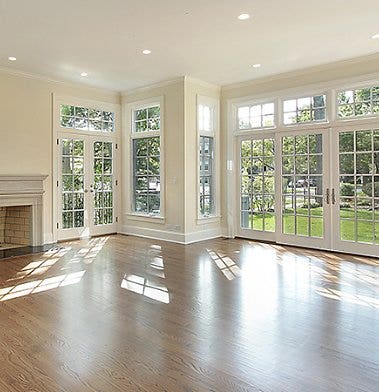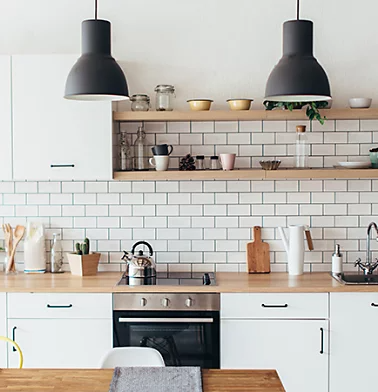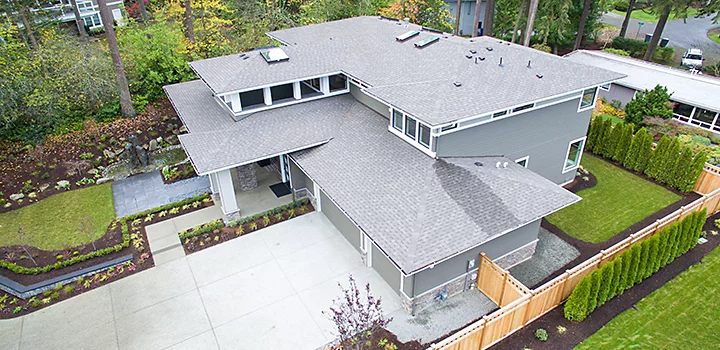Photography
Getting started in real estate photography.
Every working real estate photographer has their own approach, style, and vision. Get a foot in the door with these interior and exterior photography insights.

Photography
Every working real estate photographer has their own approach, style, and vision. Get a foot in the door with these interior and exterior photography insights.
JUMP TO SECTION
Understanding real estate photography
Interior real estate photography
Exterior real estate photography
Real estate photography stands apart from other photographic disciplines in its combination of art and business. To be successful as a real estate photographer, you need to understand both. Explore these tips from professional photographers and prepare for your start in the world of real estate photography.
High-quality photographs of a house’s interior can make or break a real estate deal. Make the right preparations before your photoshoot to ensure that your pictures showcase all the house’s best features.



When it comes to gear, a tripod, extra batteries, and backup storage are essential. Experienced real estate photographer Jillian Lancaster suggests, “Bring your wide-angle lenses, but also carry a macro lens for detail and close-up shots.” A focal length starting at 14mm or 16mm is a good choice for real estate, as it allows you to capture the whole room in one photo, with minimal distortion. “Whatever lens you use,” Lancaster says, “the most important thing is to know your equipment. Know how your camera works, know how your editing software works, and know what your limitations are.” It’s much simpler to take a high-quality photo than to edit a subpar image later.
As 3D walk-throughs and virtual tours have grown more popular, there’s increasing demand for 360 degree video footage of house interiors. A small drone is perfect for capturing this footage — but if you use one, be sure to practice with the controls before you let it loose inside someone else’s house.
When it comes to lighting real estate photos, photographers have different preferences. Some choose to turn off all the lights in a house and photograph using only natural light from the windows. This eliminates unintentional color mixing from different lightbulb temperatures. This mixing can give unnatural hues to photos, requiring more editing in post-processing. Other photographers choose to keep the indoor lights on, or to supplement the natural light with strobes or always-on lighting.

First exposure image

Second exposure image

Combined images
You can’t have much control over the subject you’re photographing in real estate, which means your choices on composition and camera settings during the photoshoot are incredibly important. “How you edit the photos — the angles that you select to shoot, the subjects that you choose to select — all of those things go into your style,” explains real estate and aerial photographer Jonathan Boone.
Every room you photograph will have different lighting conditions and dimensions. But by properly managing camera settings, you can still make each room look its best.
You also need to accurately portray your subject. Camera angle makes a huge impact on that accuracy, so take your time when finding the best angle for each room. Photographer Gregory Boone adds, “If you’re in a kitchen, and your camera is up high pointing down, it feels like you’re trying to make that kitchen look bigger than it is.” This can make a photo feel untrustworthy — the opposite of what you want people to think. Choose your angles carefully, and eliminate unintentional distortion by placing your camera on a tripod that’s level to the floor.

Curb appeal is a huge selling point for any house. Photographing the outside of a property presents a different set of challenges than interior photography, and it calls for some different tools.
Just like shooting indoors, a tripod is perfect for composing and stabilizing your outdoor shots. Depending on the size of the house, you may even be able to use the same mid-range lens you used to shoot indoors. A 24mm–70mm zoom is fine for most houses, although you may want to prepare a wider lens if you’re photographing an especially large property.
Another option for outdoor photography is a tilt-shift lens, which adjusts for some of the image distortion that occurs when you angle your camera up to photograph a two-story building from ground level. A tilt-shift lens ensures that all the vertical lines in your image — such as walls, doorways, or pillars — stay straight instead of leaning based on your camera’s angle.
New drone technologies make aerial shots more accessible than ever, and they can be a great way to show off all types of properties — especially taller buildings.
Whether you’re shooting still photos or video, you should maintain the same aspect ratio from one picture to the next in order to ensure consistency across all your pictures. A 4:3 aspect ratio is usually the best choice for making your subject look its best without losing any quality when it’s uploaded to a real estate firm’s website.
When you’re working with natural light, it’s important to consider the time of day. You want the sunlight on the house to be as soft as possible, so try to schedule your photoshoot for as far away from noon as possible — either early morning or late afternoon. If you take your photos at midday when the sun is directly overhead, you’ll have to contend with bright light contrasts and dark shadows.
If you have multiple dates available to photograph the house, check the weather forecast and try to book your photoshoot for an overcast day if possible. Overhead cloud cover does a great job of diffusing the sun’s rays to create soft, even light. If you want a clear sky in your pictures, it’s easy to replace cloudy skies with blue ones in a photo editing program.

Edit, organize, store, and share photos from anywhere.
Before you take your first picture, make sure you’ve got all the necessary equipment. That can include:
Hone your photography skills in your house or your friends’ homes, or go to churches or public buildings to gain experience capturing different architecture for your portfolio. Shoot in rooms of different sizes and in all sorts of lighting conditions so that you’re never surprised during an actual real estate photoshoot.
Once you’ve got a selection of practice pictures you’re proud of, create a professional website where you can host your growing portfolio and share it with potential clients. Once you start landing jobs, you can replace these photos with actual shots from different assignments.
Consider offering different levels of service, so you can fulfill every client’s needs and budget. When pricing new listings, consider charging by room or square footage and then consider offering broader packages that include more detailed work. Be up front with your realtor clients about costs, and don’t be afraid to mention time involved in Adobe Photoshop or Lightroom post-processing when discussing turnaround time. They just want their real estate listing to look good, so do what you can to help.
Build up your soft skills and cultivate a professional persona for dealing with your clients. Jonathan Boone adds that “taking an extra 15 to 20 minutes to chat with the homeowner, to explain what you’re doing and what your technique is, goes a long way.” Also, prioritize open communication with your realtor clients. Getting them edited, organized photos on time can make a big difference. Selling a house is a complicated process, so make getting the photographs done the easiest part of it, and you’ll be sure to succeed. Creating a polished, updated website is also important for crafting your business persona.

Always be willing to learn new things. Technology and equipment are constantly changing, as are home decor and real estate trends. “When I first started, the color palettes [in houses] were rich reds and dark blues and greens,” Lancaster says. “You’d go into all these craftsman homes with super vivid walls. Now everything is just painted white.” Learning to adjust your photography style to changing home trends is important. Lighting that works well with colored walls may wash out a white-walled room.

Based on your location, we think you may prefer the United States website, where you'll get regional content, offerings, and pricing.